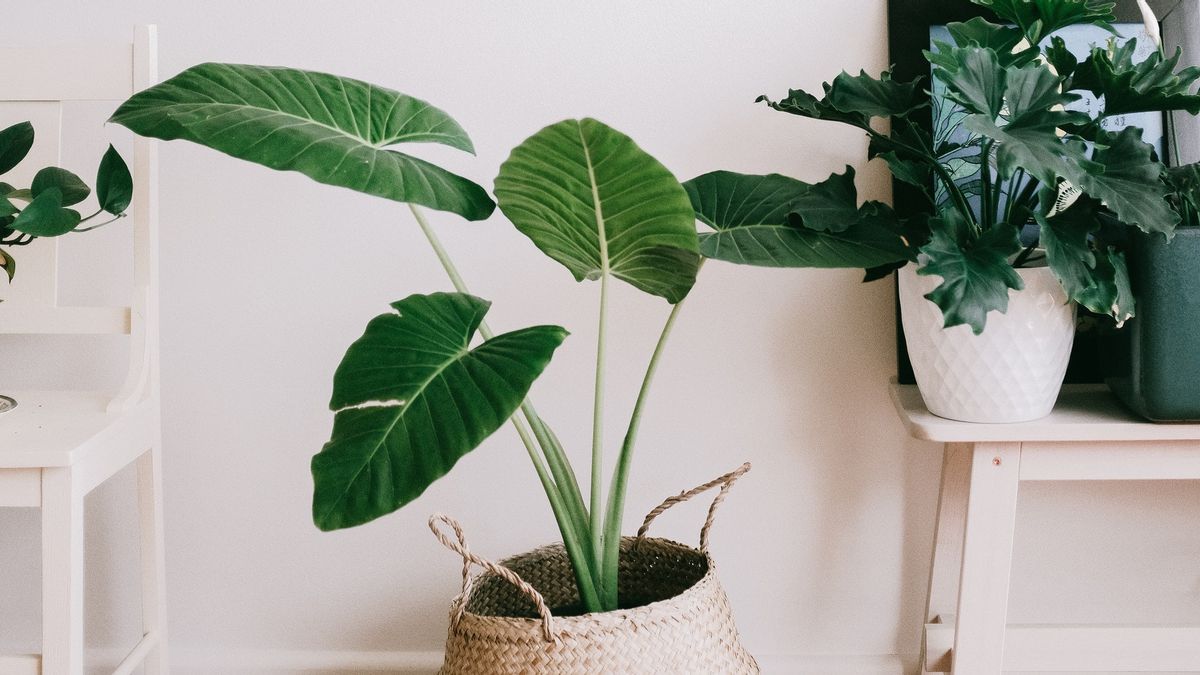JAKARTA – Homalomena is a plant that thrives with moderate to high humidity levels. The homalomena plant is native to Colombia, Kalimantan, Java, Sumatra, Costa Rica, and the Philippines.
Characteristics of plants that are familiarly called taro or nampu include heart-shaped leaves and wide. The leaf stalks are long, some are red and green. The leaf bone lines are clearly visible and there are various species variants.

There are more than 25 types of taro homalomena, among which the most popular are Schismatoglottis Andromeda, Selby, Anubias, Silver green velvet, and Homalomena Silver Red with a price range of Rp.125,000.
How to care for homalomena plants is actually not difficult. But it is necessary to know the steps and carry out watering, nutrition, and the right planting media. Then the following tips can be followed so that the leaves do not turn yellow easily.
1. Put it in a shady placeHomalomena prefers a place that is not exposed to direct sunlight. That means it needs to be put in a shady place. If the leaves are spotted with burning, yellowing and falling off, you need to move them to a more humid and less hot place.
Conversely, if it looks wilted and the leaves are paler, then move it to a place that is exposed to the sun. If possible, dry in the morning sun and move when the sun begins to rise.
2. Choose the right planting mediaHomalomena's preferred planting medium is loose and porous. Can also use planting media sold in plant stores. Usually use a mixture of loose soil, cocopit, husks, and humus. Avoid planting it in dense, hard soil.
3. Watering intensityRegular watering needs to be done so that the homalomena thrive and produce new shoots. At least water once a day in the summer and 2 times a day in the rainy season.
Before watering, check the planting medium. If it is too dry, the intensity of watering needs to be increased but not with a large volume of water because it can make the roots rot easily.

Fertilization for leaf plants such as taro homalomena, can be with liquid fertilizer that is sprayed on the back of the leaves and stems. While manure can be given every 6 months.
5. Make sure the pot drainage is goodThis is a way to reduce humidity that is too high and causes the roots to become infected with fungi and bacteria. Make sure the pot has good drainage.

Don't forget, if the homalomena plant gets bigger and thicker, it needs to be moved to a bigger pot.
To deal with pests, usually those that attack homalomena plants are spider mites, by checking them regularly. When you find pests, immediately isolate the plant and wipe the leaves with a sponge that has been dipped in water mixed with dish soap.
The five tips above can be practiced so that your favorite plants continue to thrive, have beautiful leaves, and sprout a lot.
The English, Chinese, Japanese, Arabic, and French versions are automatically generated by the AI. So there may still be inaccuracies in translating, please always see Indonesian as our main language. (system supported by DigitalSiber.id)













